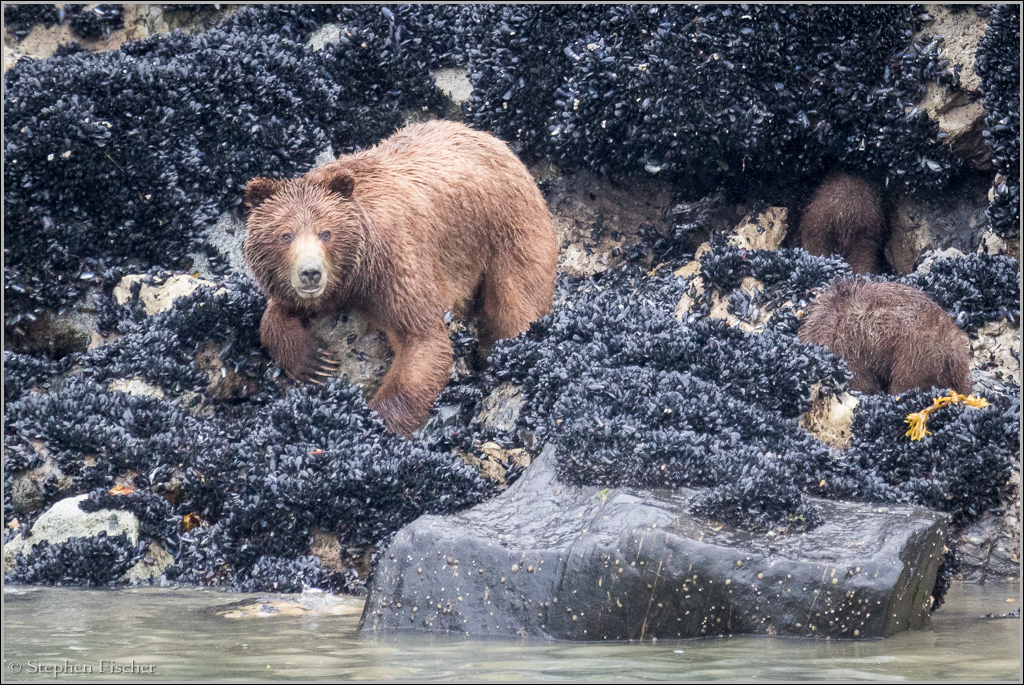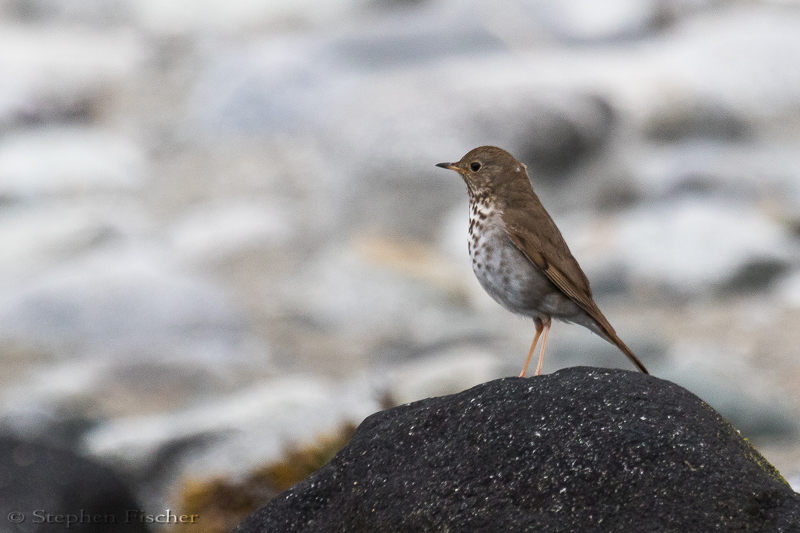Picture of the week
| Previous weeks |
 July
10, 2016 July
10, 2016 |
 July
3, 2016 July
3, 2016 |
 June
19, 2016 June
19, 2016 |
 June
12, 2016 June
12, 2016 |
 June
5, 2016 June
5, 2016 |
 May
22, 2016 May
22, 2016 |
 May
8, 2016 May
8, 2016 |
 May
1, 2016 May
1, 2016 |
|
|
|
|
|
|
|
|
| Older |

Alaskan Brown Bear on Glacier Bay
Alaskan Brown Bear mother and two cubs foraging along the coast of Glacier Bay. Photographed from the Glacier Bay day boat after being picked up from a 5 day kayak camping trip up the east arm. The day boat ride back to Bartlett Cove stopped for some of these brown bear sighting, while also visiting the Margerie glacier up-close and a pass by the Lamplugh glacier on the west arm. While at the Margerie glacier we were able to witness a calving of a large ice berg as captured by one of the photos below (with the harbor seal in the foreground). The boat ride back was a nice conclusion to a remarkable kayaking trip up the Muir and Adams Inlets on the east arm that provided even more up-close and personal observations of this wilderness.
While kayaking at Adams Inlet, we would encounter three or four humpback whales at a time on some occasions, feeding off the plentiful bounty of fish of this pristine bay. Sometimes these whales would cruise close by and at times dive underneath our kayaks, coming back up on the other side. The booming noise from their occasional breaches could be heard for miles given the solitude of the area (motorized boat traffic is restricted). Sometimes it was possible to predict when they would breach based on watching them do a deeper dive, as indicated by them raisting tail fluke higher in the water beforehand. It was common to hear and seem them just while camped from along the shore.
In addition to whales and brown bears, we also harbor porpoises, sea otters, stellar sea lions, harbor seals, bald eagles and other birds such as common and artic terns, long-tailed ducks, loons, tufted puffins, pigeon gulliemots, and marbled murrlets. Some of these birds were a first for me, being also surprised by their relatively large numbers at time. Much of this wildlife would be present in higher concentrations where the fish was plentiful such as some of the protected bays while still having some depth to the water. Along the shoreline hermit and varied thrushes could be heard singing almost constantly, occasionally with one flying out to a more exposed rock for a better look.
We camped the first night up toward the far end of Adams Inlet on an open glacial caused alluvial fan, choosing it for being better with respect to mosquitos given a broader exposure to winds and not as near to the brush. But it also ended up being close a large tern colony. After picking my first site for setting up my tent, the terns drove me back with their incessant dive bombing. After picking a spot a little further back I was left in more peace, with them warning me if I would wander a little too close or even stare in their direction a little too much. By just sitting further off with the telephoto lens, you could spot nests hidden on the ground, some with eggs, and even an occasional chick. The other portion of this trip is covered in the previous blog here.
More images (click to select the larger view at bottom)



All content and images are property of Stephen Fischer Photography, copyright 2010-2016. Last updated: 7/24/2016 ()